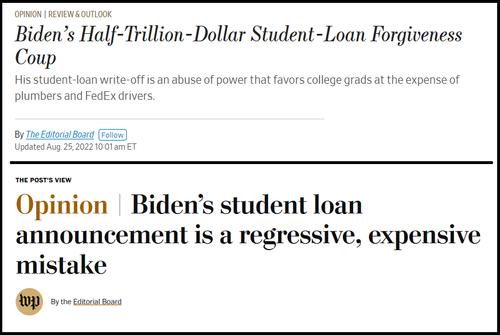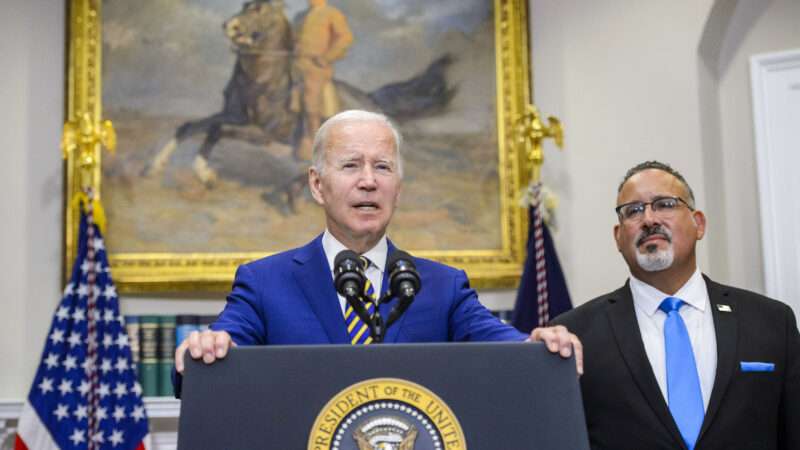Please enjoy the latest edition of Short Circuit, a weekly feature written by a bunch of people at the Institute for Justice.
New on the Short Circuit podcast: Minnesota appellate attorney Scott Flaherty joins the show to talk Indian Law. With a special guest appearance by Captain Ahab.
- Two judges say the National Park Service’s permit-and-fee requirements for filmmakers violate the First Amendment. Unfortunately for the plaintiff, it’s the district judge and the dissent. D.C. Circuit: The requirements are reasonable.
- A John Doe plaintiff alleges that he was put through a biased Title IX tribunal while a student at MIT. But before that can be resolved, we need to know if he can proceed pseudonymously. First Circuit: Which is a question that has bedeviled the federal courts. So here is some detailed-but-not-exhaustive guidance for how courts in this circuit should think about it.
- Members of the Shinnecock Indian Nation would like to fish in the Shinnecock Bay, but New York officials keep ticketing and prosecuting them. Tribe members: We have a right to fish in the bay based on these colonial-era deeds. District court: Congratulations! You’ve won the suing-the-gov’t trifecta! You lose on sovereign-immunity grounds. And Younger abstention. And lack of Article III standing. Second Circuit: Actually, those defenses don’t apply to at least some of these claims.
- Pennsylvania man pays off loan from the U.S. Dept. of Agriculture, but the USDA tells a credit reporting agency that he’s in arrears, damaging his credit. Feds: Sovereign immunity; we can’t be sued for any Fair Credit Reporting Act violations. Third Circuit (adding to a juicy circuit split): Reversed. The FCRA waives sovereign immunity by allowing civil damages claims against “any person” who violates the Act, and that plainly includes the federal gov’t.
- Mississippi’s constitution disenfranchises felons convicted of certain crimes. The section was originally adopted in 1890 and at a convention steeped in racism. It’s since been reenacted twice—in 1950 and 1968—via legislative proposal and ratification by the people. Fifth Circuit (en banc, per curiam): The 1968 reenactment cleansed the provision of its previous discriminatory taint. Judge Graves, dissenting: A law expressly aimed at preventing Black Mississippians from voting cannot be saved via reenactment by a virtually all-white group of people who engaged in massive and violent resistance to the Civil Rights Movement—some of whom burned a cross on my grandmother’s lawn, two doors down from where I grew up.
- Can a Baylor student sue the university for only providing online instruction during the Spring 2020 semester after the COVID-19 shutdown? District court: Get out of my courtroom. Fifth Circuit: “We espy a potential ambiguity in the definition of ‘educational services’ and remand for further consideration of that issue.” Concurrence: Also, a “merger clause” ain’t a force majeure clause. That’ll be bad for Baylor on remand.
- Friends, you may remember the time the Fifth Circuit granted qualified immunity to Arlington, Tex. officers who tased a suicidal man who’d doused himself in gasoline, knowing it would set him on fire. It did; he died; and it burned down his family’s house. This week, the Fifth Circuit (unpublished, over a dissent) says the district court was a little too quick to dismiss the family’s claims against the city.
- Intoxicated San Antonio, Tex. man found sleeping in the driver’s seat is arrested, spends over 16 months in pretrial detention before charges are dismissed. Fifth Circuit: The length of his detention is a “wretched commentary,” but he can’t sue the arresting officers.
- The Chief of Investigation for the Mississippi State Penitentiary at Parchman is fired for testifying at a criminal hearing on behalf of one of his investigators (who was criminally charged following a convoluted throwdown fight between investigators and prison officials). The now-former chief sues for First Amendment retaliation. Fifth Circuit: It’s clearly established that a public employee can’t be fired for testifying outside of their ordinary job duties. But mayhaps the chief’s testimony was within his job duties, and it’s not clearly established he can’t get fired for that. Qualified immunity. Judge Costa (dissenting): But actually, it’s obvious he wasn’t testifying as part of his duties. He was subpoenaed by the criminal defendant, after all.
- Texas state troopers pull over man, smell marijuana, and then find a handful of ecstasy pills. He’s arrested and they search the car, finding a small amount of pot plus “100 pairs of women’s underwear, a number of sex toys, and lubricant,” “children’s school supplies” and three cellphones. Intrigued, the troopers apply for warrants to search the phones—ostensibly for drug dealing and based on the drug evidence only. Yikes! They find some child porn on the phones, which leads to a second set of warrants that then lead to almost 20k child porn images. Was there probable cause for the search? Fifth Circuit (en banc): “Close call” but who cares because the good-faith exception applies. Concurrence: Yeah, good faith, but we’ve got to be careful going forward with phones. People have a lot of stuff on them. Dissent: There was only evidence of drug possession, not drug dealing.
- After New Orleans officials began experimenting with a licensing scheme for allowing short-term rental on platforms like Airbnb, the city decided to scale things back, restricting such rentals to a single owner-occupied house per applicant. Out-of-state license holders—now rendered ineligible—sue, alleging violations of the Takings Clause and the dormant Commerce Clause. Fifth Circuit: The out-of-staters have no takeable property interest in the temporary licenses, but they can’t be treated worse than locals.
- Sixth Circuit: It feels like this should be unnecessary, but if you are a defense attorney representing a Black man convicted of murder, and your goal is to keep him off death row, maybe don’t have a shrink testify during the penalty phase that a huge proportion of Black people are incurably violent.
- Two off-duty Indianapolis officers choke bar patron unconscious, drag him facedown to parking lot, beat him still further, empty his wallet, and leave him covered in blood. Jury: The city needs to pay the man $1.2 mil. Seventh Circuit: On the contrary, the officers violated a bunch of city policies, and (under doctrine that your humble editor blithely asserts is wrong) the city can’t be held liable simply for employing some baddies. (The officers were fired—but acquitted of felony battery.)
- After a local paper reported that Wisconsin financial adviser Thomas Batterman had been accused of mishandling funds and committing wrongdoing, he sued for defamation. But, says the Seventh Circuit, he cannot prevail because Wisconsin financial adviser Thomas Batterman had, in fact, been accused of mishandling funds and committing wrongdoing.
- Arkansas healthcare professionals cannot legally provide minors with or refer them for gender transition procedures, including medication and surgeries. Eighth Circuit: The law discriminates on the basis of sex, and the state hasn’t met its burden of showing that the law is supported by an “exceedingly persuasive justification.” Preliminary injunction affirmed.
- Overseer of federal consent decree gets five Oakland, Calif. cops, who fatally shot a homeless man, fired. A violation of the city charter? District court: No. Ninth Circuit: Vacated. The procedure to fire cops is a state-law issue, and this case should be in state court. Dissent: This case is all about what the federal consent decree requires, so it does belong in federal court.
- Kissimmee, Fla. seventh grader is having a bad hair day, and when his mom takes off his hoodie (to comply with the school dress code) he pushes her away. A school resource officer arrives, curses and mocks the 13-year-old for several minutes, and then slams him to the ground without warning. Eleventh Circuit: The officer had arguable probable cause to arrest him for battering his mother, so qualified immunity on the false arrest claim. But (over a dissent) it is “obviously clear” the officer used excessive force. (The officer was convicted of battery.)
- Eleventh Circuit: The FDA failed to consider vaping companies’ marketing plans before denying approval for sale of their vaping devices and liquids. They need to go back and do that. Dissent: “SPOILER ALERT,” we all know how that’s going to turn out. Let’s not waste everyone’s time.
- On-duty Bureau of Indian Affairs officer threatens to arrest woman and have her children taken away if she does not have sex with him. (She does and has the officer’s child; he’s sentenced to three years in prison.) Feds: Ah, but she can’t sue under the Federal Tort Claims Act because he was acting outside the scope of his employment. Montana Supreme Court: Wrong, she can sue. (IJ signed onto an amicus brief that urged the court to reach this result.)
- And in en banc news, the Seventh Circuit will not reconsider its decision that it did not violate the Eighth Amendment to deny an Illinois inmate access to exercise for two years. In concurrence, Judge Scudder says it’s an issue that “cries out” for review in a different case.
- And in panel rehearing news, the Ninth Circuit will reconsider its decision that federal law does not preempt a California law that makes it a crime for employers to require unwilling employees to agree to arbitration as a condition of employment.
IJ client Visibly offers online vision tests to consumers so they can easily renew prescriptions for eyeglasses or contacts. But in 2016, South Carolina legislators overrode the governor’s veto and banned such tests even though there is no plausible concern about their safety or reliability. We are pleased to announce, however, that after six years of litigation the South Carolina Supreme Court announced this week that our clients unequivocally have standing to challenge the law that bans them from operating in the state. To the merits!
The post Short Circuit: A Roundup of Recent Federal Court Decisions appeared first on Reason.com.
from Latest https://ift.tt/Q5aYhqP
via IFTTT








